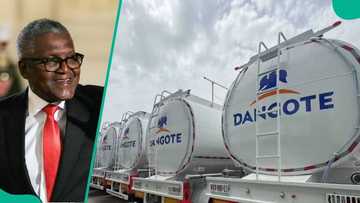Operationalising RealTime CRM in Financial Services: A Technical Playbook for Data, Models
By Nnaemeka Egbuhuzor
From strategy to action: why CRM must become real time
Customer relationship management in financial services has shifted from a record of interactions to an active decisioning fabric that responds in milliseconds. The research base shows that when machine learning, predictive analytics, and natural language interfaces are embedded into CRM, institutions anticipate needs, segment with precision, and automate service across channels while reducing cost to serve. Chatbots and virtual assistants handle intent and sentiment in context, while analytics determine the next best offer or action for each customer and each moment. These capabilities are not cosmetic; they are how banks, insurers, and fintechs turn data into loyalty, retention, and risk control at scale.

Source: Facebook
Several 2022 milestones made this shift inevitable. Salesforce introduced Genie at Dreamforce as a real time data platform that harmonizes events into a unified customer graph for activation across Customer 360. The UK Financial Conduct Authority published final Consumer Duty rules that raise the bar on fair value and communications, forcing firms to evidence that personalization is not misleading or exclusionary. Swift accepted a community request in October 2022 to begin ISO 20022 migration in March 2023, enriching payments data that CRM and decisioning can use for fraud, churn, and lifetime value models. In the United States, the CFPB issued its October 2022 outline for personal financial data rights rulemaking under Section 1033, a step toward standardized, consumer directed data access for use cases such as account aggregation and switching. NIST released successive drafts of its AI Risk Management Framework in 2022, giving teams a common language for mapping, measuring, and managing model risk.
Technological sovereignty as a business imperative
A bank can only personalize responsibly if it controls identity, consent, data quality, and model lineage. The architectural pattern that emerges in the literature is a layered, sovereign data and model backbone attached to CRM through clean interfaces. At the base, stream operational events from core banking, cards, and digital channels into an event bus. Land and govern them in a lakehouse with row level security, immutable lineage, and time travel for audit. Resolve identities with deterministic plus probabilistic matching and bind them to a consent and preference service. Expose a real time customer profile service that unifies features such as spend velocity, merchant category diversity, income stability, and complaint risk. Above that, maintain a shared feature store for reuse across churn, offer propensity, credit limit management, and fraud. Gate all model calls through an inference gateway that enforces strong identity, rate limits, canarying, explainability hooks, and model versioning. This keeps separation of duties intact while allowing CRM to request scores and rationales in the flow of service.
Cloud based CRM is the natural control plane for activation. Modern systems contribute real time analytics, omnichannel orchestration, and fraud controls that watch transaction and behavioral signals across mobile, web, branch, contact center, and social. They also make data engineering tractable for mid-sized institutions by shifting elastic compute, secure storage, and software upgrades to managed services with audited controls.
Balancing innovation and equity
Technical excellence must coexist with fairness and compliance. The research emphasizes that model governance should treat marketing and service decisioning with the same discipline as credit underwriting. That means a model registry with documented purpose, training data lineage, performance by segment, and bias checks; drift monitoring; and periodic human review. Institutions like RBS have used governance and audits to prevent models from favoring or excluding groups in ways that conflict with duty of care. In parallel, Consumer Duty in the UK requires firms to evidence outcomes, not just intentions, so explanations need to be accessible to customers and regulators. The NIST framework gives a practical scaffold for risk mapping, measurement, and mitigation across the CRM model life cycle.
Data standards and policy shifts amplify these controls. ISO 20022 makes payments data richer and more structured, improving anomaly detection and customer insight when handled under explicit consent. Section 1033’s open banking direction nudges US institutions toward portable, consumer authorized data flows, which raises the bar on consent capture, revocation, and purpose limitation inside CRM. Both trends push teams to build consent aware pipelines where every feature carries a provenance tag, allowed purposes, and expiry.
Talent, operating model, and collaboration
Turning a CRM stack into a decisioning engine requires an operating model that pairs product managers, data engineers, ML engineers, risk and compliance, and frontline leaders. The research recommends apprenticeship style model operations where analysts own a model from design to retirement, with clear service level objectives for latency, availability, and monitoring coverage. It also points to the need for curricula that teach segmentation, uplift modeling, and real time decisioning on realistic financial schemas rather than toy datasets.
Vendor ecosystems accelerate delivery when they snap cleanly into the backbone. A pragmatic pattern is to let CRM continue to own journeys, cases, campaigns, and channels, while the decisioning brain lives in a reusable service that any channel can call. In practice this appears as next best action APIs with guardrails for eligibility, fairness, and offer fatigue; a multilingual conversational layer that routes intents to human agents with full context; and a closed loop learning layer that writes outcomes back to the profile and feature store. Case studies in the literature show that banks using this pattern improved forecast accuracy, reduced manual processing with document intelligence, and cut fraud losses with behavior aware models while keeping a human in the loop for complex cases.
Implementation blueprint and measurable outcomes
Start with a compact intake and delivery loop. Choose two to three use cases with clear business owners and measurable baselines, for example attrition risk in current accounts, cross sell for cards within regulatory constraints, and false positive reduction in fraud alerts. Define data contracts, identity rules, and consent capture once and reuse them. Establish a model registry, CI/CD for features and models, and an inference gateway before the first pilot goes live. Wire explanations into CRM agent and customer views so staff and customers can see why an action was taken and how to contest it. Build a kill switch for any automated action that could materially harm a customer. Train agents and product teams to interpret scores and rationales and to escalate when explanations do not make sense. Measure lift, fairness by segment, service latency, and complaint volumes; iterate weekly.
Cloud based CRM features help keep the loop tight. Real time dashboards track acquisition, churn, and lifetime value; omnichannel orchestration ensures consistent treatment across mobile and branch; and embedded fraud controls flag anomalies as they happen. The outcome reported across studies is a mix of higher retention and conversion, lower cost to serve, faster complaint resolution, and stronger audit posture because every automated suggestion and action can be traced to data, code, and policy.
Collaboration and policy leadership
No institution operates in isolation. Payment networks moving to ISO 20022, supervisory expectations under Consumer Duty, and open banking rulemaking shape how CRM should treat data and decisions. Participating in these communities early pays dividends: it keeps mapping tables current, ensures consent and purpose tags align with evolving regulation, and gives teams advance warning on new outcomes they must evidence. Align internal model governance to external frames such as NIST’s AI risk framework so that audits and regulatory dialogue use shared language and artifacts.
Conclusion
AI enabled, data driven CRM is now the execution layer for Customer Duty and for growth. The technical path is clear: govern identity and consent, stream events into governed storage, expose a real time profile, reuse a shared feature store, serve decisions through a monitored gateway, and activate through CRM channels with explanations that humans can trust. Institutions that adopt this pattern report better personalization, improved fraud control, and faster operations while meeting rising regulatory expectations. The research record shows that this approach is both feasible and repeatable, and it is ready for scaled delivery in financial services.
Don't miss out! Join Legit.ng's Sports News channel on WhatsApp now!
Source: Legit.ng








